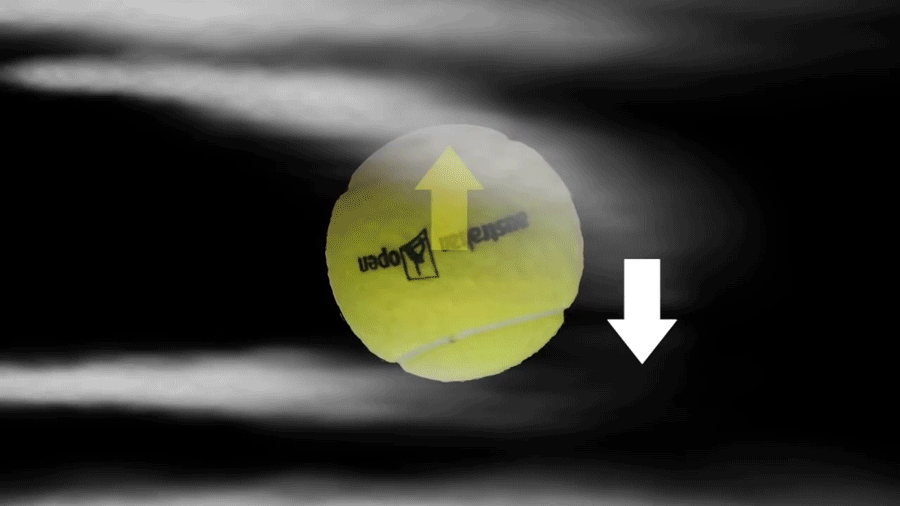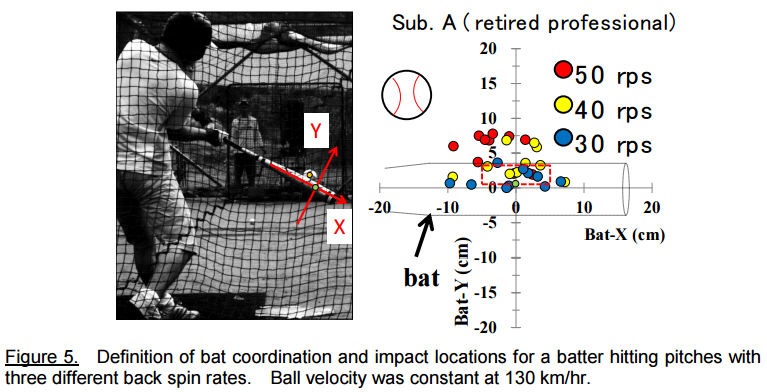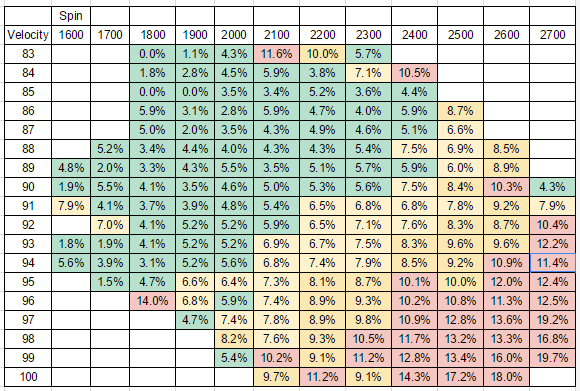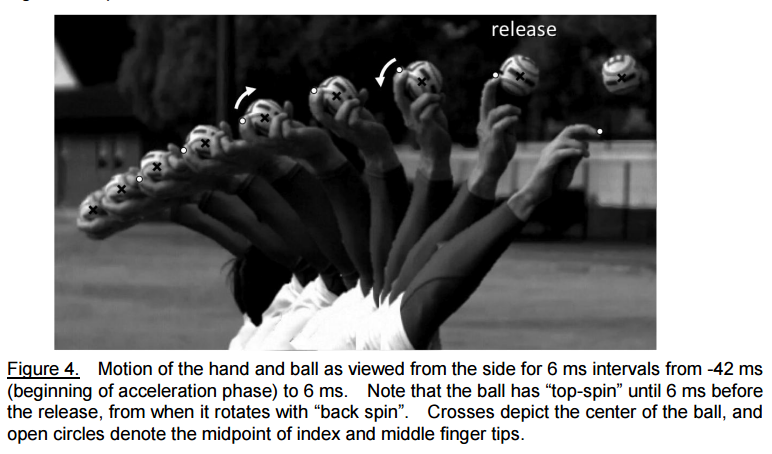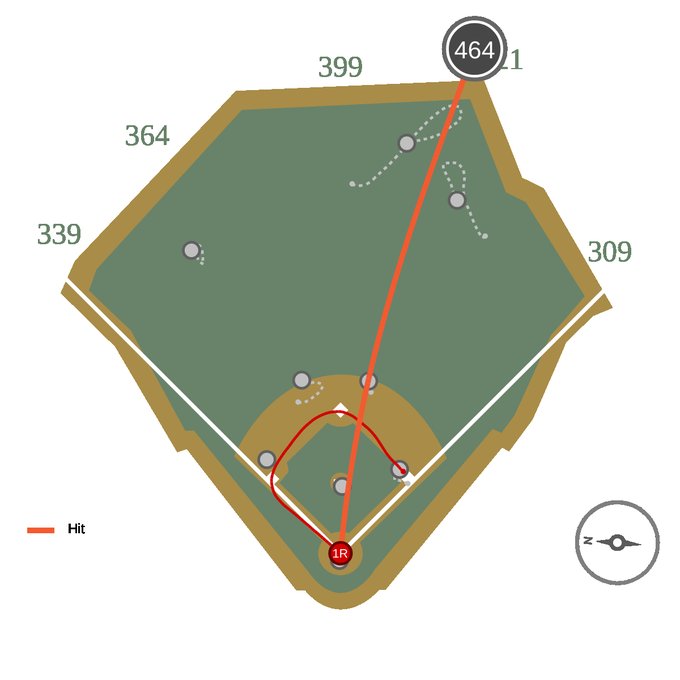Given that "Launch Angle" and "Exit Velocity" are the two biggest buzz words in the industry today, I figured I would get up to speed on this and some of the more advanced metrics listed above. JK ;)
Launch angle.
It's a term that was barely uttered five years ago, yet it's quickly become one every modern baseball player needs to know.
Launch angle refers to the ball's vertical angle of trajectory off the bat. Anything below 0 degrees is an automatic ground ball, and advanced statistics have found ground balls to be one of least productive types of contact a hitter can make at any level. For decades, young ballplayers were told to "swing down on the ball." We know now that's a bunch of a baloney, as such a technique will likely lead to little more than groundouts, double plays and the occasional single that sneaks under an infielder's glove.
In the MLB, where we have access to all batted ball data, there's been a clear trend toward higher launch angles. In 2015, the league average launch angle was 10.1 degrees. That crept up to 10.8 degrees in 2016 and 11.1 degrees in 2017. It's likely no coincidence there were 6,105 total home runs hit last season, smashing the previous league-high of 5,693 from the year 2000.
Many have referred to this trend as the "fly ball revolution," but it might be more accurate to dub it the "ground ball revolt." The best teams are teaching their players to abhor ground balls and the launch angles associated with them. Inside the Los Angeles Dodgers' practice facilities, you'll find a sign that says "No Ground Balls Ever." At the University of Iowa, players take batting practice in front of a wall of nets which span from third base to first base. This "Wall of Launch Angles" helps the players focus on driving the ball over the nets, as opposed to blasting grounders into them.
So if a launch angle under 0 is not ideal, what is? Well, any launch angle under 10 degrees isn't going to have a great shot of being an extra base hit, and any launch angle over 35 degrees is likely to be a sky-high fly ball easily tracked down by an outfielder. A launch angle between 10 and 25 degrees seems to be most fruitful, as it's a meaty trajectory that results in a high percentage of not only hits, but extra base hits. For pro hitters who can smoke the ball, the top end of that range is a bit higher. But launch angle is only half of the equation in this data-driven hitting revolution—the other being exit velocity. That refers to how fast the ball comes off, or exits, the bat. Being able to pair a high exit velocity with the right launch angle on a consistent basis is key to being a productive hitter. The average exit velocity for high school players is about 75 mph, while elite high school players often hover around 90. A player with an optimal or near-optimal average launch angle but a poor average exit velocity isn't going to be a great hitter, nor is one with a great average exit velocity but a poor average launch angle.
"Even just a few years ago, no one talked about launch angle or exit velocity or spin rate of a pitch. Now, even at the youth level, it's going down into the academies. Colleges are starting to ask 'what's a kid's exit velocity or what's his spin rate?' All that data is really quantifiable and it's a great measuring tool for evaluation," says David Mayberry, a Baseball Application Specialist for FlightScope.
FlightScope is the company collecting much of the data players and coaches now use to inform their swings. The technology actually has roots in the defense industry, where it was first used for missile tracking beginning in 1989. Thirty countries still rely on FlightScope for missile tracking data, but the tech has since crossed over into sport.
After making inroads in cricket, golf and tennis, the tech came to baseball and softball about three years ago. It's since been a revelation for many pro and collegiate teams. The unit used in baseball, which is known as the FlightScope Strike, relies on 3D Doppler radar to track the full flight of a projectile. "It's sending out microwave signals, and then with the Doppler effect and the disturbance in the frequencies, we're able to detect the full flight of a projectile—whether it's a missile or a pitched or batted baseball," Mayberry says.
The unit utilizes a built-in camera and Wi-Fi hotspot to easily display data on a tablet such as an iPad or Microsoft Surface. Its flexible mounting allows it to be deployed in about any game or practice situation you can imagine, including indoor batting cages. Once the unit is up and running, it collects data with no need for additional human input. The sheer number of metrics it can collect is astonishing:
At $18,000 a unit, the FlightScope Strike isn't cheap. However, the number of college and pro teams who have invested in the technology are a testament to its value. The New York Yankees own three units solely for the purpose of scouting, and have deployed them in Venezuela and the Dominican Republic in an effort to identify the next international star. The Philadelphia Phillies plan to roll out the units at every level of their organization. Stanford, Illinois, Arkansas and Bucknell are among the collegiate teams looking to gain an edge with FlightScope.
While the highest levels of baseball make use of most (if not all) the metrics collected by FlightScope, it's launch angle and exit velocity that have the most universal appeal and application. Showing ballplayers a 3D representation of their hit trajectory, exit velocity and launch angle on a tablet results in quick comprehension and a vested interest regardless of age.
"Everybody's a visual learner these days, so when they can actually see the shape and trace of their hit, it becomes a part of their approach," Mayberry says. "Even in the youth level, 14-U and into high school, the players—when they see this data, they're visual learners and they're really engaged. The engagement factor is huge when it's on a screen—a lot of players tune out verbal cues or authoritative figures. But when it's on a screen, they're really engaged and taking ownership."
The data gives purpose to practice. While a ball hit off the back of the batting cage used to be lauded as a great piece of hitting, we now know that it's likely to result in a ground ball. Technology like the FlightScope takes the guess work out of it and allows players to see, feel and repeat the type of contact they want to be making.
"Traditionally, if a baseball player was training in a cage, a hard hit ball off the back of the cage was commendable. When it really shouldn't have been. That's a launch angle of 0 degrees—it's coming out straight. That's a ground ball. No matter how strong you are, if you hit if off the back of the cage at 0 degrees, that's a grounder," Mayberry says.
Access to this data can also help better inform a player's sports performance training. If they see their average exit velocity and launch angle are improving over time, they can have confidence the work they're putting in in the weight room is translating to better functional strength, improved hand-eye coordination and harder contact.
"I use this term cause and effect. You can make adjustments and see the real-time effects. If you're working on your ground reaction forces, how much force you're putting into the ground, you can immediately see what effect that has on your average launch angle, exit velocity, batted ball direction. Same thing if you're a pitcher, your velocity and spin rate. Then you can check your biomechanics. If you're doing a certain type of movement, and you're getting better torque from your hip and shoulder separation, then you can see the immediate cause and effect in real time," Mayberry says.
The data can also be a valuable gauge for recovery—if a player is sitting at a significantly lower exit velocity than they're used to, perhaps they need to examine their recent habits. How much sleep have they been getting? What kind of foods have they been eating? Are they overtraining and need to ease up a bit? Feeling sluggish was not something easily quantifiable for baseball players in the past, but that no longer has to be the case.
While this data is still fairly new in the world of baseball, teams have quickly learned that it has tremendous value. Although traditional stats like batting average or extra base hits can be skewed by factors like level of competition, luck, field dimensions, etc., these metrics do not lie. If a kid has an impressive average exit velocity and an efficient average launch angle, college and pro scouts know those skills are likely to translate to the next level. "Everything's evolving as we speak. I was talking to a youth academy located in South Carolina, and they said Clemson and the University of South Carolina are reaching out and asking about a 14-year-old player's exit velocity. So it's becoming a requirement," Mayberry says.
Mayberry believes that even T-ball players aren't too young to be thinking about their average exit velocity and launch angle. Because at the end of the day, those two metrics are what determine how hard and how far you're going to hit the ball. Focusing on those two factors can help a young ballplayer build a powerful, athletic swing. "Ground balls should be getting out of their vocabulary. Maybe they'll hit it too high at first, but then they can zero in and bring (that launch angle) down," Mayberry says. "All of this rolls up to a better understanding for the player. They're taking ownership and they're being more accountable for their own success."
Photo Credit: Icon Sportswire/Getty Images


